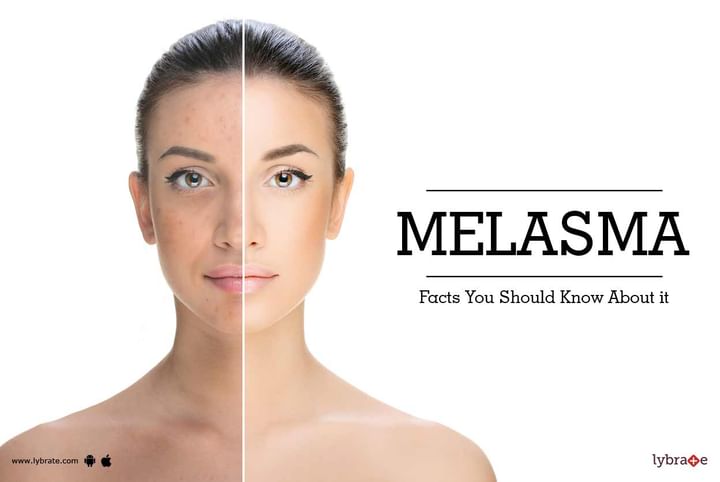Melasma : Facts You Should Know About it
Melasma is a type of tan or dark skin discoloration in which hyper pigmented patches appear on cheeks, nose, upper lip and forehead. It is also known as chloasma or the mask of pregnancy when it appears in pregnant women causing them to lose their proverbial glow. It is also common among women on the verge of menopause (Skin Changes After Menopause), or those taking patch or oral contraceptives. It also tends to appear in women who are taking medications for hormone replacement treatment. Melasma is more common among women than men with a whopping 90% of women getting it. Melasma is also seen in other parts of the body that is exposed to the sun.
While the discoloration doesn't do any physical harm, it may leave you feeling out of place and self conscious.
Though it isn't totally clear what causes this problem, the common pattern of the problem in women shows that estrogen and progesterone sensitivity are associated with the condition. Stress and thyroid disease is also known to trigger this condition as both problems lead to hormonal imbalances. Sun exposure is also one of the known causes of melasma as it triggers tanning. Ultraviolet rays also affect the cells responsible for pigments or melanocytes.
Because one of the causes of melasma is hormonal imbalance, it often rectifies itself when the root cause is addressed. For some women it disappears on its own. If this doesn't happen, the doctor may prescribe external creams to lighten the skin. External skin treatment like chemical peels, dermabrasion, and microdermabrasion are also suggested depending on the severity of the condition. These are common skin treatments that strip away the top layer which may lighten the dark patches. Though external treatments can improve the overall appearance, it doesn't guarantee that the dark patches won't resurface again if the underlying hormonal problem isn't resolved. A combination of external and internal treatment can help improve the skin quality and prevent reoccurrence to an extent. During the treatment procedure and afterwards, you'll also have to limit your sun exposure and wear sunscreen regularly.
If you visit a dermatologist, they may mostly use the wood lamp method (a method in which the skin is viewed under a specific light) to determine the depth of your melasma.
Some treatments like those with tretinoin, an acid, cannot be used done during pregnancy.
If you've tried all the above but are yet to find relief, you'll need to find coping mechanisms. You can use concealers and makeup to cover the patch. You'll also need to wear and SPF 30 sunscreen and a big hat that shades your face.
If the disease is affecting you psychologically and you feel self conscious get help from a local support group.
The most important part of skin managment is Sunscreen, sunscreen and sunscreen. STRICTLY AVOID STEROID CREAMS OR TRIPLE COMBINATION CREAMS like MELALITE COSMELITE AND MANY MORE. It will give quick results and then you will get sensitive skin, white patches or vitiligo type skin unwanted hairs over face, thin skin and telangiectasia etc and also u become addicted to these creams.
Always consult a qualified dermatologist.



+1.svg)
